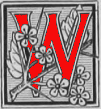
illiam Henry Millais was born in Southampton, Hampshire in 1828, the son of John William Millais and his wife Mary Emily Evermy. He was the elder brother of John Everett Millais who was born a year later in 1829. Part of William's early years was spent living in St. Helier in Jersey and Dinan in Brittany. In 1838 the family moved to London to further John's artistic career. Initially John studied at Sass's Drawing Academy under Francis Cary but by 1840 John had entered the Royal Academy Schools as a probationer. From 1844 the family lived at 83 Gower Street in Bloomsbury. The two brothers were devoted to each other. William obviously did not have the benefit of the art education received by John at the Royal Academy Schools. He did, however, receive some training from his brother and even worked as John's assistant for a time in the 1850s, including making a couple of copies of his brother's pictures like James Wyatt and his Granddaughter and The Black Brunswicker. William hadn't even seriously considered an artistic career until 1849, but fortunately he appears to have had great natural talent.

William Millais at work. 1853 (sketched by J.E. Millais, Millais 205).
He began by painting still lifes. Although he worked in both oils and watercolour, he was primarily a watercolourist from 1853 onwards. He did a few illustrations for books such as for Margaret Gatty's Parables from Nature of 1861 and Adelaide A. Proctor's Legend and Lyrics, published in 1866. Early on his brother encouraged him to pursue landscape painting en plein air in a detailed Pre-Raphaelite manner. In 1850 he spent the summer in Jersey working on his landscape paintings. In the summer of 1851 he joined his brother John, William Holman Hunt, and Charles Allston Collins at Ewell where John was painting the landscape background for Ophelia, Hunt was working on The Hireling Shepherd, and William worked at painting landscapes directly from nature. In 1853 William was invited, together with his brother, to join John and Effie Ruskin on their Scottish holiday. The group spent several weeks in Callander in Perthshire where the Millais brothers stayed at the new Trossachs Hotel and spent their time sketching and fishing. Later the group moved to Glenfinlas where John worked on the background of his famous Portrait of John Ruskin. William completed one important painting during his stay, Glenfinlas with Millais Fishing, now in the Makins Collection. After spending seven weeks on this trip William left on 18 August 1853 to return to London.
William became modestly successful as a painter. He exhibited at the Dudley Gallery, intermittently at the Royal Academy in 1852-3, 1876, and in 1890-93, but primarily at the New Water Colour Society (Institute of Painters in Water Colours) where he exhibited as late as 1888. In 1856 he had been a candidate for the Society of Painters in Water Colours (Old Water Colour Society) but failed to be elected. When John became a famous artist and showed his work to clients in his studio on the first floor of his mansion house at 2 Palace Gate, London, he tried to attract potential buyers for William's work by allowing his brother to show his watercolours in the hall. William also showed at commercial galleries like Agnews and the Fine Art Society.
William married his first wife Judith Agnes Boothby, an amateur artist and the daughter of the Reverend Charles Boothby, at All Saints Church in Kingston upon Thames, Surrey, on 2 June 1860. Unfortunately she died in childbirth on 6 April 1862. The couple had one daughter, Judith Agnes Millais. William later married his second wife, Adelaide Jane Fraser, on 7 June 1866 at the Parish Church of St Paul in Knightsbridge, London, by whom he had a son and two daughters. By at least 1886 Millais was living at Ward Hill in Farnham, Surrey. He died on there on 20 March 1899.
Bibliography
Lutyens, Mary. Millais and the Ruskins. London: John Murray, 1967.
Millais, John Guile. The Life and Letters of John Everett Millais, President of the Royal Academy. Vol. 1 of 2 vols. New York: Frederick A. Stokes, 1899. Internet Archive, from a copy in Brigham Young University. Web. 12 November 2024.
Created 12 November 2024